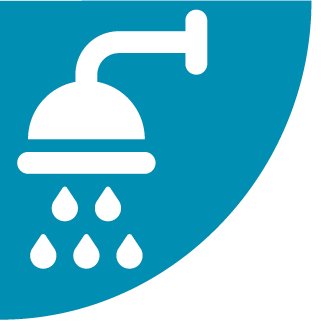
NEWSWATCH
BACTERIA AND VIRUSES
CDC Publishes Guidance on Reducing Growth and Spread of
Legionella
Citing an alarming increase in the incidence of Legionnaires’ disease outbreaks, the Centers for Disease Control and Prevention released
guidance
on June 7 intended to help building owners and managers prevent the conditions that lead to Legionella
growth in water systems. The guidance, which CDC describes as a “toolkit,” is based on the recently revised ASHRAE standard Legionellosis: Risk Management for Building Water Systems
and provides a checklist to help building managers identify whether a water management program is needed, examples of locations where Legionella
could grow and spread in a building, and ways to reduce the risk of Legionella
contamination.
“Years of outbreak response have taught us where to find
Legionella
hot spots,” said Nancy Messonnier, MD, director of CDC’s National Center for Immunization and Respiratory Diseases. “The toolkit will help building owners and managers better understand where those hot spots are and put measures in place to reduce the risk of Legionnaires’ disease.”
In comments submitted to CDC in May, members of AIHA’s Indoor Environmental Quality Committee noted that the toolkit does not list AIHA’s
Recognition, Evaluation, and Control of Legionella in Building Water Systems
in its “resources” section. The committee also questioned CDC’s decision not to include information related to environmental sampling for Legionella
, which is necessary to confirm that control measures are effective.
However, IEQ Committee member David Krause, a coeditor of the AIHA guideline, praised CDC for recognizing that building managers need additional tools to prevent and identify
Legionella
.
“We should be encouraged by the CDC’s engagement in Legionnaires’ disease prevention. The toolkit is a good starting point for discussing the need for a water management plan.”
“We should be encouraged by the CDC’s engagement in Legionnaires’ disease prevention,” Krause said in an e-mail. “The toolkit is a good starting point for discussing the need for a water management plan.”
Krause, a toxicologist and industrial hygienist with Geosyntec Consultants in Tallahassee, Fla., noted that the toolkit aligns with ASHRAE’s
Legionellosis
standard, which does not address sampling.
“I believe that the hesitancy of public health agencies to rely upon sampling as the sole prevention strategy for
Legionella
in the past was driven by the absence of clear standards of care for professionals who collect and interpret samples,” Krause said. He added that the AIHA guidance, published last year, addresses this concern. “The guideline tightly binds sampling to validate Legionella
control measures with a comprehensive water management plan based upon a risk assessment. Without validation sampling, building water systems can still become contaminated, despite the use of control measures.”
In addition to the toolkit, CDC published a summary of recent Legionnaires’ disease outbreaks in North America. From 2000 through 2014 the rate of reported cases of legionellosis, which includes both Legionnaires’ disease and Pontiac fever, increased 286 percent, from 0.42 to 1.62 per 100,000 persons. CDC also cautioned that legionellosis may still be underreported.
An
article
introducing the AIHA guideline Recognition, Evaluation, and Control of Legionella in Building Water Systems appeared in the June/July 2015 issue of The Synergist
. For more information about Legionnaire’s disease, visit the CDC website
.thesynergist | TOC | NEWSWATCH | DEPARTMENTS | COMMUNITY

